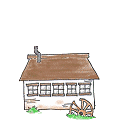


The Humble Soapnut - A Guide to the Laundry Detergent that Grows on Trees ebook by Kathryn Ossing
will be released to subscribers in:
soon!



 10
10





 12
12





How Permies works: https://permies.com/wiki/34193/permies-works-links-threads
My projects on Skye: The tree field, Growing and landracing, perennial polycultures, "Don't dream it - be it! "
 6
6




Invasive plants are Earth's way of insisting we notice her medicines. Stephen Herrod Buhner
Everyone learns what works by learning what doesn't work. Stephen Herrod Buhner
 13
13




Nancy Reading wrote:I live in a windy area and shelter is everything. Both houses and people do better with shelter from the wind.
 7
7




 4
4
















 8
8




Rad Anthony wrote:All the leaves on a tree reminds me of thousands of little sails on a ship.
 6
6




Life's too short, eat desert first! [Source of quote unknown]
You have to be warped to weave [ditto!]
 2
2




 4
4




Changing one thing, no matter how tiny, is still change
 6
6
















 4
4




How Permies works: https://permies.com/wiki/34193/permies-works-links-threads
My projects on Skye: The tree field, Growing and landracing, perennial polycultures, "Don't dream it - be it! "
 1
1




Sarah Joubert wrote:My 1 acre property has a magnificent view overlooking a valley and stretching to the hills in the distance. Absolutely beautiful! But I stuggle to get hedges to establish as it's so hot in summer, the wind is dessicating, and in winter it roars in from the other side and nothing grows in between!. I've currently got a row of citrus I am hoping will eventually bush out to form a wind break to the north and I've got prickly pears to the south but it's slow going. As I only have an acre, I would prefer most of my trees to be food trees. Is there something fast growing that loves heat and dry conditions I can be planting as a nurse plant/temporary barrier?
 3
3





|
The human mind is a dangerous plaything. This tiny ad is pretty safe:
Rethink farming through a free, eco-first game: Wilderocity.com
Wilderocity.com
|

